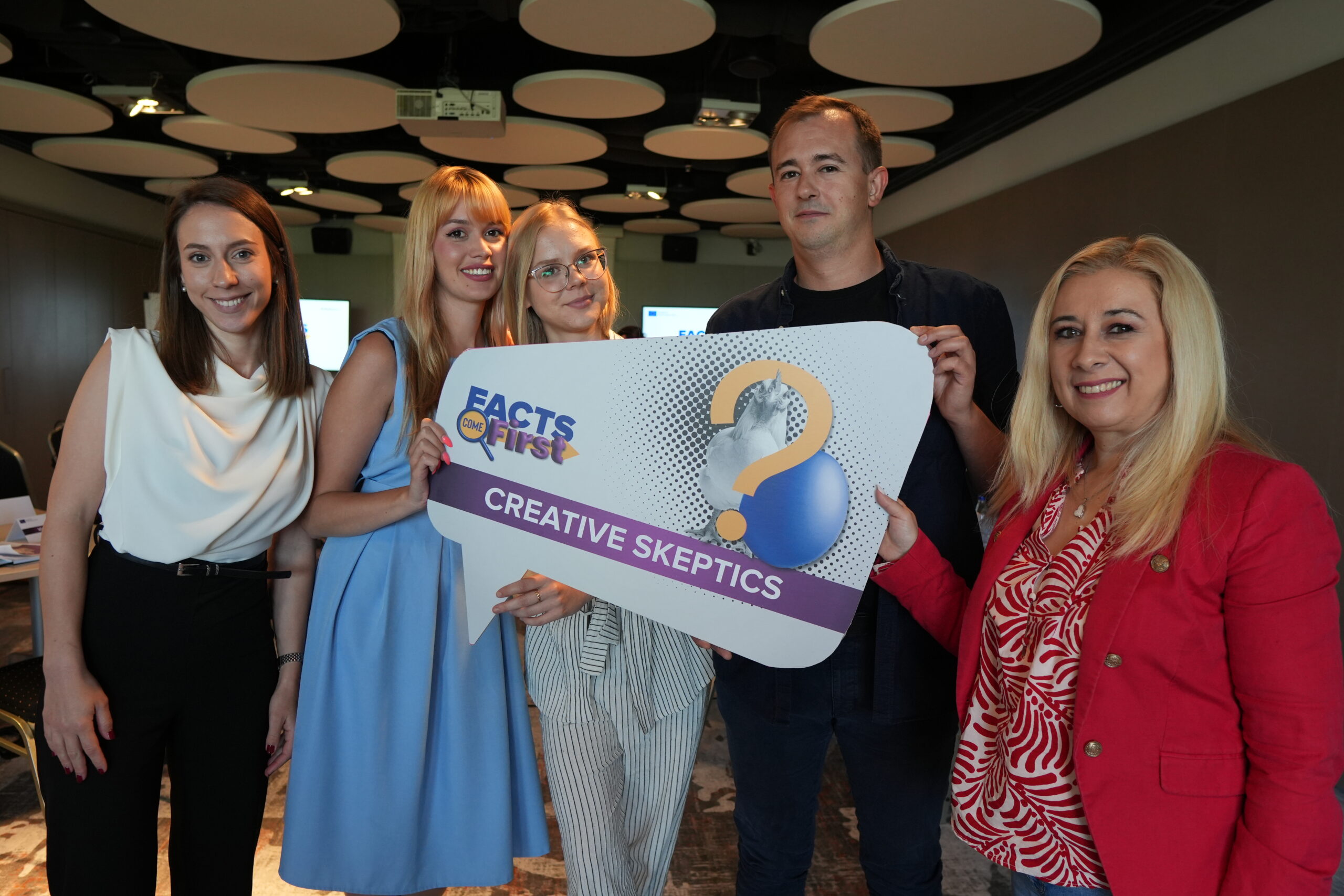
“Is my decision truly mine? Only mine?”
This may soon become one of the most pressing questions we ask ourselves. In an age when psychological and digital manipulation are more sophisticated than ever, many of us are being gently steered toward choices we believe are our own—when, in fact, someone else has made them for us. The tool of the trade? So-called native advertising.
Take, for instance, readers of the prestigious The New York Times. While browsing its website, many users unknowingly wandered into a sponsored content section, seamlessly integrated into the platform’s editorial layout.
What they encountered appeared to be a heartfelt article on bird conservation and the vital role birds play in preserving our environment. It was well-crafted, visually pleasing, and supported by subtle background music and charming animations of birds fluttering about.
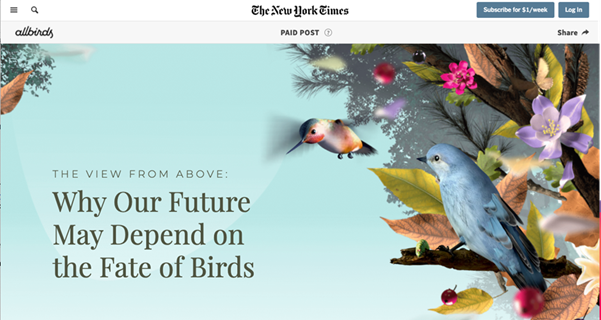
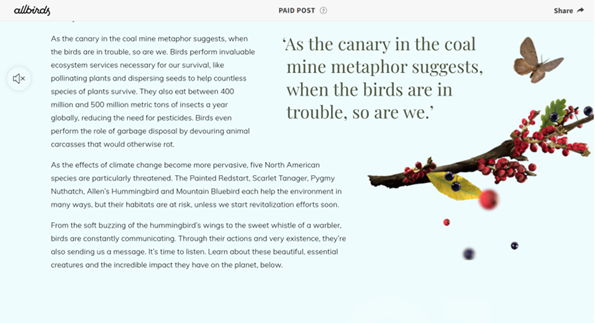
Only toward the end of the article does the reader discover the brand name “AllBirds”—a shoe company whose name conveniently contains the word “bird.” But by then, the promotional intent is so gently embedded that the reader doesn’t feel targeted. There’s no flashy call-to-action, no “Buy Now” button—just an aftertaste of environmental consciousness linked to a brand.
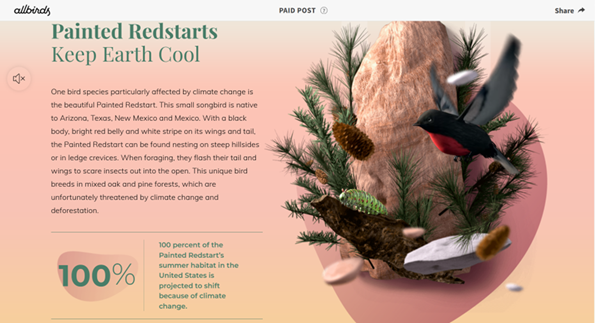
The hope is that this emotional and sensory imprint might lead to a purchase later—perhaps when the reader notices they have landed on a retail site or reflects on how their consumer choice could help “Mother Earth.”
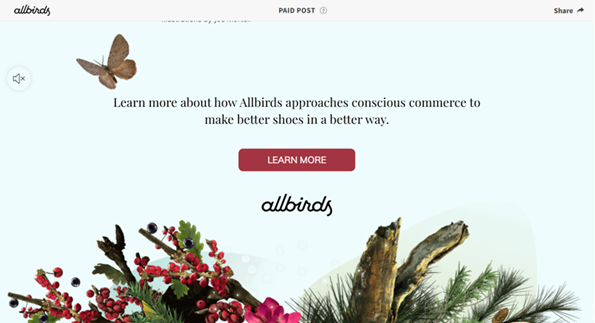
The president of the Center for Independent Journalism in Bucharest, Ioana Avadani, believes the major danger of this kind of advertising is the fact that it is hidden.
“Advertising is a legitimate way of communicating information. Commercial information is legitimate information—people must know what they are buying. But hidden advertising is problematic. Hidden advertising pretends to be news, and instead of presenting options, it presents something like a recommendation. The fact is hidden advertising is dishonest. And that is the major danger,” Avadani says.
Ioana Avadani, the president of the Center for Independent Journalism in Bucharest
Native advertising is not cheap. Brands pay premium dollar not only for visibility in respected outlets but also for a nuanced, non-intrusive presentation. The goal is clear: to blend in so well with editorial content that the viewers do not realize they are being sold to.
These ads are engineered to avoid disrupting the user experience. They match the tone, style, and format of the hosting platform. They appear within a user’s feed, fitting in naturally with surrounding articles or videos—avoiding the “ad fatigue” that traditional banners often cause. And even if marked “paid post”, their strictly commercial intent flies under the radar.
And that is exactly the point.
What Happens When This Technique Moves to Politics?
Marketers who craft such campaigns might argue that “positive manipulation” is acceptable—after all, no one was forced to buy shoes. But what happens when the same tactics are applied to political decisions?
What if we are nudged not toward eco-friendly sneakers, but toward certain candidates in elections? What if we are subtly led to believe in one version of societal values over another, without realizing we have been influenced?
“There is an underlying danger because if one technology is used for commercial purposes, it may later be used for political purposes. So, the same way you get hidden advertising for shoes or clothes or food… you may get hidden advertising—or native advertising—in politics. And once again, instead of presenting you with open options and letting you, as a voter, choose, you are just presented with ‘the truth.’ As if this was the reality,” says Avadani.
In regions like the Western Balkans, where critical thinking and media literacy are still developing, this becomes a serious concern. A large portion of the population seldom questions what they read—especially when it comes from a “reputable” source.
This is the critical question. When the tools of influence are this sophisticated and invisible, who gets to decide which messages are beneficial and which are harmful? The answer, unfortunately, is often the very entities that create and pay for these messages.
Avadani underlines that most people are unaware of native advertising—and even media professionals often don’t recognize it.
“It is a rather new trend, and as I said before, the main danger is that it is hidden. It’s like playing the people instead of appealing to their judgment and allowing them to form their own opinions based on arguments—just playing with their emotions,” Avadani says, adding that it is a new manipulation technique, mediated by technology.
Native advertising, in its most elegant form, can inform and inspire, but it can also manipulate and mislead. As media consumers, we must develop sharper awareness and stronger critical thinking. The more we understand the tools being used on us, the more capable we are of making decisions that are truly our own.
AUTHORS
Mladen Savatović, Journalist
Neda Dimova-Prokić, Journalist
Nina Đuranović, Fact checker
Nina Pavičević, Influencer
Emina Odobašić, Young European Ambassador
“Advertising is a legitimate way of communicating information. Commercial information is legitimate information—people must know what they are buying. But hidden advertising is problematic. Hidden advertising pretends to be news, and instead of presenting options, it presents something like a recommendation. The fact is hidden advertising is dishonest. And that is the major danger,” Avadani says.
Ioana Avadani, the president of the Center for Independent Journalism in BucharestNative advertising is not cheap. Brands pay premium dollar not only for visibility in respected outlets but also for a nuanced, non-intrusive presentation. The goal is clear: to blend in so well with editorial content that the viewers do not realize they are being sold to.
These ads are engineered to avoid disrupting the user experience. They match the tone, style, and format of the hosting platform. They appear within a user’s feed, fitting in naturally with surrounding articles or videos—avoiding the “ad fatigue” that traditional banners often cause. And even if marked “paid post”, their strictly commercial intent flies under the radar.
And that is exactly the point.
What Happens When This Technique Moves to Politics?
Marketers who craft such campaigns might argue that “positive manipulation” is acceptable—after all, no one was forced to buy shoes. But what happens when the same tactics are applied to political decisions?
What if we are nudged not toward eco-friendly sneakers, but toward certain candidates in elections? What if we are subtly led to believe in one version of societal values over another, without realizing we have been influenced?
“There is an underlying danger because if one technology is used for commercial purposes, it may later be used for political purposes. So, the same way you get hidden advertising for shoes or clothes or food… you may get hidden advertising—or native advertising—in politics. And once again, instead of presenting you with open options and letting you, as a voter, choose, you are just presented with ‘the truth.’ As if this was the reality,” says Avadani.
In regions like the Western Balkans, where critical thinking and media literacy are still developing, this becomes a serious concern. A large portion of the population seldom questions what they read—especially when it comes from a “reputable” source.
This is the critical question. When the tools of influence are this sophisticated and invisible, who gets to decide which messages are beneficial and which are harmful? The answer, unfortunately, is often the very entities that create and pay for these messages.
Avadani underlines that most people are unaware of native advertising—and even media professionals often don’t recognize it.
“It is a rather new trend, and as I said before, the main danger is that it is hidden. It’s like playing the people instead of appealing to their judgment and allowing them to form their own opinions based on arguments—just playing with their emotions,” Avadani says, adding that it is a new manipulation technique, mediated by technology.
Native advertising, in its most elegant form, can inform and inspire, but it can also manipulate and mislead. As media consumers, we must develop sharper awareness and stronger critical thinking. The more we understand the tools being used on us, the more capable we are of making decisions that are truly our own.
AUTHORS
Mladen Savatović, Journalist
Neda Dimova-Prokić, Journalist
Nina Đuranović, Fact checker
Nina Pavičević, Influencer
Emina Odobašić, Young European Ambassador
Please wait while your video is being uploaded...
Don't close this window!